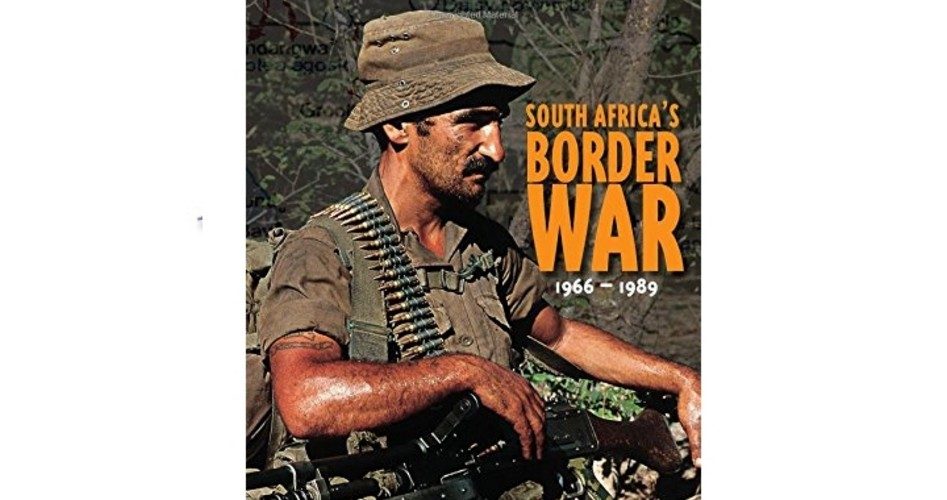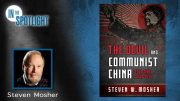
The passage of more than two decades since the purported “collapse” of the Soviet bloc has been a time in which a large portion of the history of the “Cold War” has been rewritten or suppressed. Historical revisionism has corrupted the public memory of the primary struggle between the free world and the communist conspiracy — it has rewritten vast expanses of 20th-century world history. Much of history pertaining to the decades following the Second World War has been revised, particularly when discussing the debacles associated with decolonization. The history of the so-called Third World has been sanitized of references to the defining struggle of our age — a fact that was readily on display when Nelson Mandela (the impenitent Marxist terrorist who became president of South Africa after the end of Apartheid) died in December 2013 with hardly any reference to his actual role in the course of events. In point of fact, the entire African theater of conflict between freedom and communism has largely been forgotten in the popular mind. It is therefore of profound significance when books that relate the true character of the far-from-cold war for Africa are published.
Willem Steenkamp’s account of the protracted struggle for South West Africa (now Namibia) has become one of the most enduring accounts of a conflict that went on for a generation. In South Africa’s Border War 1966-1989, the reader finds an comprehensive — and comprehensible — retelling of a war which went on between a sometimes confusing array of forces. As Steenkamp observes in his Foreword:
Southern Africa’s longest war effectively ended on November 1 of 1988, when South Africa and the South West African People’s Organization finally called it quits, 23 long years after the first shot had been fired. It had gone on for so long that for several generations of people of all races it was hard to believe that peace had come; that (on the South African side at least) a father and son could be wearing the same campaign medal for fighting on the same front but 15 years apart. In the latter stages, in fact, the brunt of the war was borne on both sides by young men who had not even been conceived when it had started.
Steenkamp’s book was first published in 1989 — immediately after the war had ended — and the 2014 edition is simply a long-anticipated reprint of that edition. It would be easy to critique the work based on the quarter century of events that have transpired in the region since South Africa’s Border War 1966-1989 was first published. However, such a reaction would miss the point: Steenkamp’s book offers the reader an opportunity to see how the conclusion of the battle for South West Africa appeared to observers at the time of its conclusion, and it is presented by a knowledgeable writer who was a witness to the conflict. Steenkamp’s journalistic work received commendation from United Press International in 1967 and 1968 for his coverage of the conflict; at the same time, Steenkamp served (in his words) “ingloriously but happily, as an ordinary mechanised infantryman.”
Steenkamp offers a clear account of the conflict, and the complicated interaction of tribal tensions, national squabbles, and communist manipulation. Thus, for example, he traces the conflict to “a group of expatriate Ovambos” (the largest ethnic group within Namibia) that started the Ovambo People’s Organization (later Ovambo People’s Congress) in 1957. Steenkamp notes numerous links to the South African Communist Party and observes that although “it is commonly believed that the OPO was a black nationalist political movement from its inception” in fact, “a number of its early members were also unashamed adherents of the South African Communist Party and the OPC, like the African National Congress and other similar moments, saw no harm in this. The result was that the organization enjoyed a link with Moscow which was never to wither away and there is indisputable documentary evidence that during the border war its military trainees received heavy doses of straight Marxist indoctrination. But it would be simplistic to describe the OPC and its successors as communist organisations.” An important aspect of communist infiltration and manipulation is found in the Marxist propensity to hijack preexistent organization or movement and twist it to serve there purposes.
Steenkamp’s account presents the substantial degree of Soviet and Cuban direct military aid that was brought into the conflict. In Steenkamp’s words: “Angola’s disastrous slide into chaos was largely due to the Soviet Union’s undermining of the post-Caetano era in Portugal. It might well be that the Russians were not working according to a pre-determined plan but were merely seizing a handy opportunity, but that does not alter Moscow’s culpability (and the ‘opportunity’ theory is suspect in any case….)” He also makes note of the deleterious effects of UN interference in South West Africa: “General Assembly resolutions … served no purpose except to aggravate the general situation.” The General Assembly “never made any effort to hide its bias” and “[UN Secretary General] Dr. Kurt Waldheim bears much personal responsibility.” South Africa’s Border War is a detailed account of the war that does not hesitate to set forth the mistakes made by the South African government, but it is also offers careful, thorough analysis of the perfidy of forces of the communist bloc. In many respects, the Republic of South Africa stood alone against the coordinated forces of the Soviet bloc and slowed the expansion of communism in Southern Africa.
One of the reasons for a 2014 republication of Steenkamp’s book is the extensively illustrated nature of his book: The “coffee table” dimensions of South Africa’s Border War, with pages filled with color and black and white photographs supplements the text to add further depth to his account. The republication of the work is of benefit to students of history who desire a better understanding of one of the murkier periods of Cold War history. The battlegrounds of Angola and South West Africa have never been as well known in America as the struggles for Korea, Vietnam, Cambodia, and Laos, but that does not diminish the significance of the struggle. The South Africans fought some of the most significant battles against communist aggression, and their reward has often been the degrading silence of Western nations.
Willem Steenkamp, South Africa’s Border War 1966-1989 (Solihull, England: Helion & Company, 2014). 256 pages. $59.95



